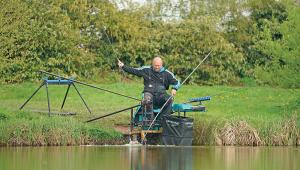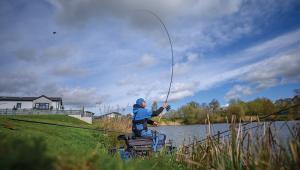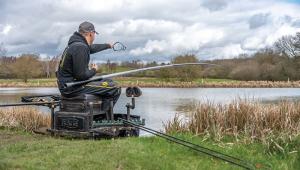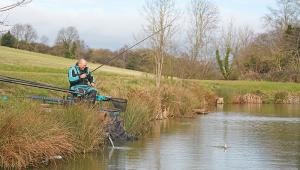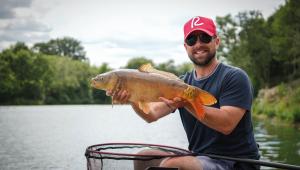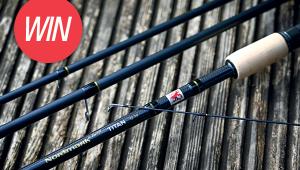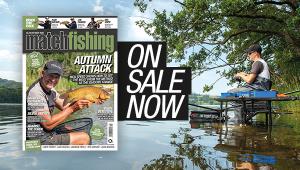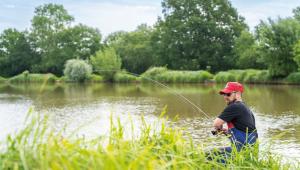Winter Carp On The Method Feeder - Pemb Wrighting
As the weather starts to cool on more prolific venues, such as Todber Manor where we are today, the fish still respond to feed on a lot of occasions. Todber is renowned for its huge weights in the summer when you can catch fish (and plenty of them) literally right at the end of your keepnet on a top kit of your pole.
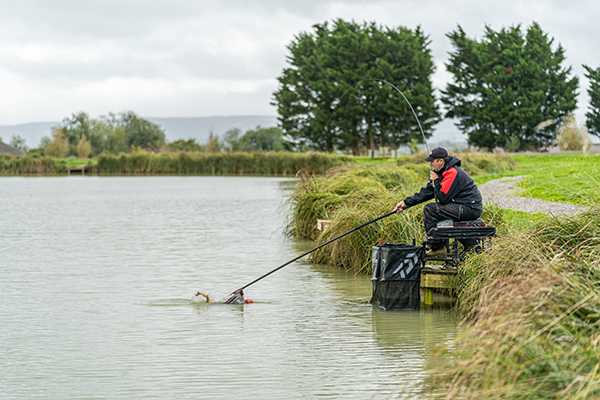
Feeding plenty of bait in several swims will keep the ravenous fish coming all day long and you will be well on your way to reaching your limit in your impressive array of keepnets. Obviously the fish haven’t gone anywhere once the cold weather sets in, but catching at the end of your keepnets is no longer viable, so where do the fish go and what’s the best to still catch them?
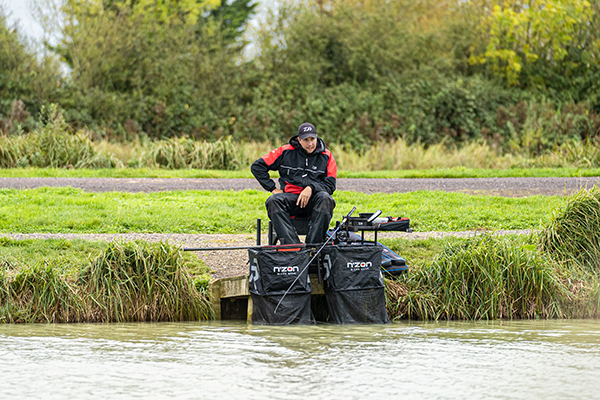
As we all know the most effective way of catching when the fish are out of pole range is the Method Feeder and that becomes the dominant tactic for catching here once winter sets in. We’re talking super short hook lengths for most effective hooking, a small pile of bait with your hook bait right in the middle and that results in the most effective commercial fishery tactic bar none!
But as devastating as it is here at Todber, there’s a lot more to catching on it and getting it to work for you than simply casting it out and hoping you’re on the fish and assuming the tip will keep going round. There are a lot of things to consider even though the venue is stuffed with fish, and that’s what I’m going to run through with you today.
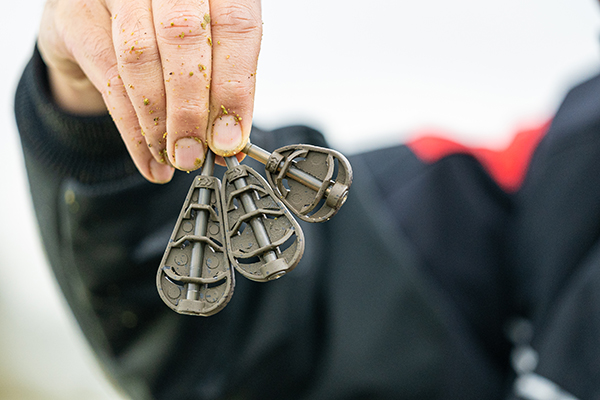
Swim Choice
This isn’t where the best pegs are on the lake are, but where in your swim are the best areas to cast to. Where exactly you cast the feeder in your swim will change from day to day. For example, on a milder day the fish will want to be in shallower water near an island.
Other days the fish may want to be in the more open ‘bowl’ areas of the swim/lake. You’re rarely fishing for massive weights at this time of the year even on a venue as prolific as this, so experimentation is the key. Always keep an open mind and be prepared to cast to different areas of the swim in search of the fish.
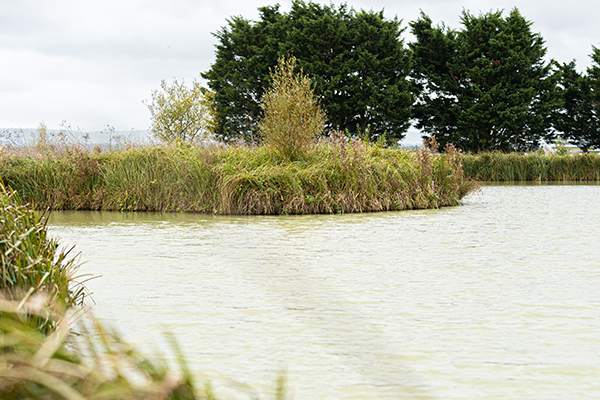
On lakes with islands or far banks (there are both here at Todber), I’ve always found the swims with a deep island margin or far bank margins are the best.
You’ve got the best of both worlds then in the form of both depth and cover. But, of course, an ideal swim in match fishing is a rare occurrence, so dotting your feeder about until you find the best spot is the way to go.
Tackle
For small commercials like Todber, I favor a short, soft rod and I’m using a Daiwa N’Zon Feeder 10’ today. This is a great little rod with a RRP of under £60 which is staggering given its performance on this type of venue! This is teamed to a N’Zon Plus LT 6000 size reel which is the perfect companion for my needs.

On the reel I have 10lb Tournament ST (surely the commercial fishery GOAT?) (For those that don’t know, GOAT is an acronym for the Greatest Of All Time – Ed). It may sound heavy but it’s on the spool for good reason and these are main characteristics your main line must have for this sort of fishing: It needs to be very hard wearing. You can often be fishing next to some sort of snag, and you don’t want to lose fish or tackle when a hooked fish rubs the line on reeds or brambles etc.
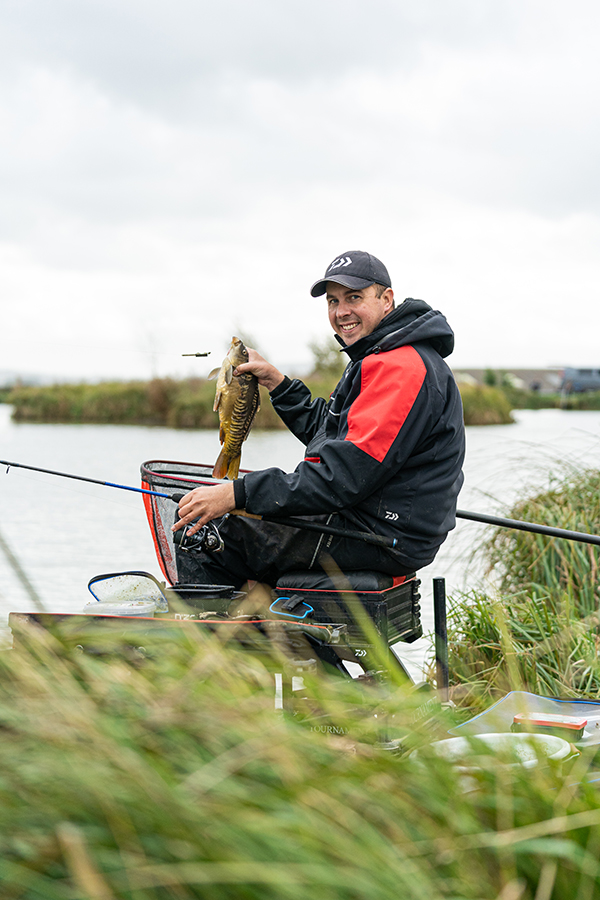
Ideally it will be low stretch. As a rule, the thicker the diameter the line is, the less it stretches and the less it stretches the more accurate you’ll be with your casting.
It needs to be heavy. A lot of the time I like to fish with a slack “ish” line from tip to feeder. With a main line that’s heavy in weight, it will sink nicely when under minimal tension so keeps out the way of any fish in the swim.
It should have longevity. I find myself having to change my Tournament ST line very, very seldom. You can leave it on the reel for ages and for me that’s important because it’s something less to worry about each week when getting your gear together late on a Friday night.
The Feeder
Down to the feeder and I like a small payload version in either 20g or 30g, depending on the distance I need to cast. I always used to use a 30g feeder no matter what, but I find myself using a 20g a lot more now on shorter chucks to reduce the noise, so I keep any disturbance to a minimum.
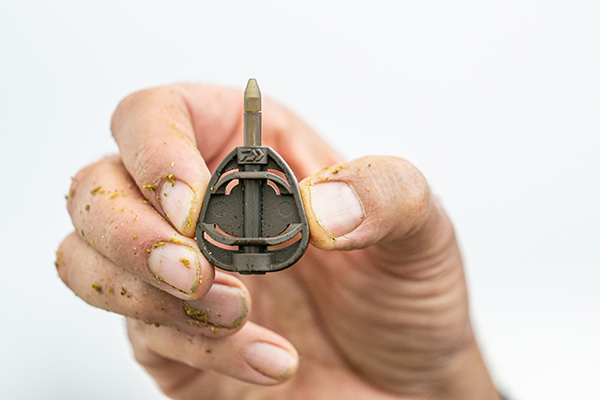
The actual feeder itself is one from the new Daiwa N’Zon Method Feeder range. It’s a very durable, lead-free design that’s shaped perfectly for casting and presenting your bait. Like most excellent feeders these days, it’s got an ECS (Easy Change System) feature that allows you to change sizes easily when fishing a free running feeder which is mega handy.
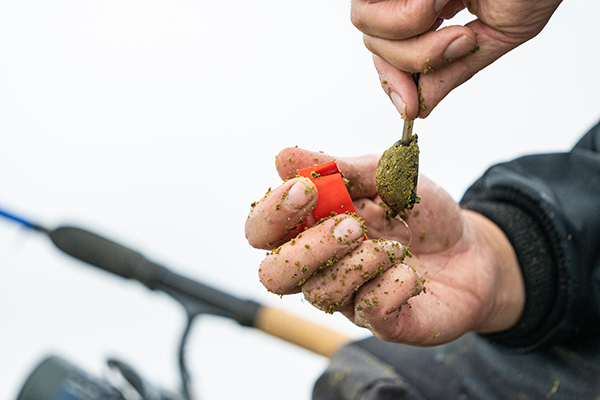
Also, this system allows you to easily remove your feeder and fix a bomb on to the stem to clip up at the start of the session, or when clipping up to a new spot mid-session. Down to the hooklength and hook and I like to use a cut down ready rig. A 6-inch Guru LWG or Kaizen hook cut down to three-inches is perfect for me. I use these in a size 14 to 0.15mm line which I find to be perfect.
Bait
Personally I find a mixture of 2mm pellets and groundbait is best at this time of year, with a much heavier proportion of groundbait compared to the pellets. I use Advantage Baits Method groundbait in either Natural or Black depending on the water colour and venue.
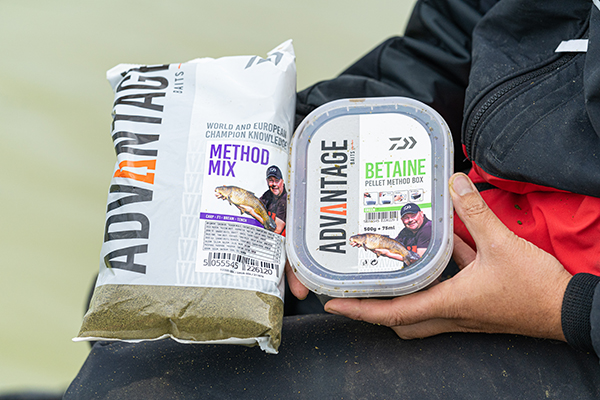
Some places I’ve been they just respond better to one colour no matter what the water colour is. It’s not a super strong fishmeal mix like many other groundbaits are, so it’s not too overpowering in the cold water.
Pellet wise, I like to use a contrasting colour to the groundbait I’m using for a visual hit on the bottom. Today I’m using the Natural colour groundbait, so I’ve got some Green Advantage Baits 2mm Pellets in the mix. I only soak them for 30 seconds or so as I want them quite hard, again so it’s contrasting to the groundbait.
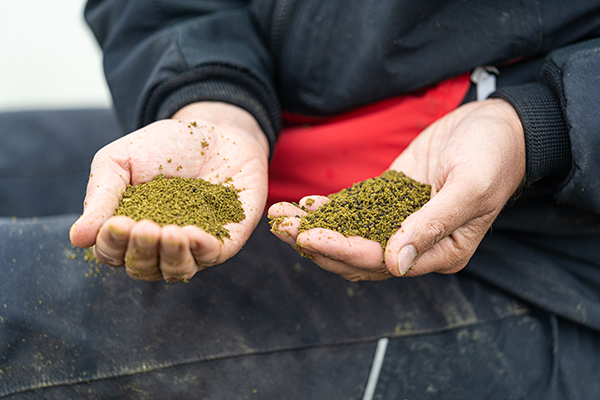
Hookbait choice I really limit myself so I can concentrate on the fishing rather than worrying if I’ve got the correct hookbait colour or flavour on. Dead maggots, either 1 or 2, will do for me at this time of year on Todber. I really like the softness of dead maggots, something I’ve found fish are very partial to when the water temperature drops. If it’s a hard day, you’ll pick up the odd skimmer too which are always welcome when bites can be few and far between.
Rod Positioning
If I was fishing the Method on a venue such as Todber in the summer, I wouldn’t use a rod rest at all. I’d be chucking in, hitting the clip, and following the rod straight down in front of me and holding the line between the reel and butt ring to feel for a bite.
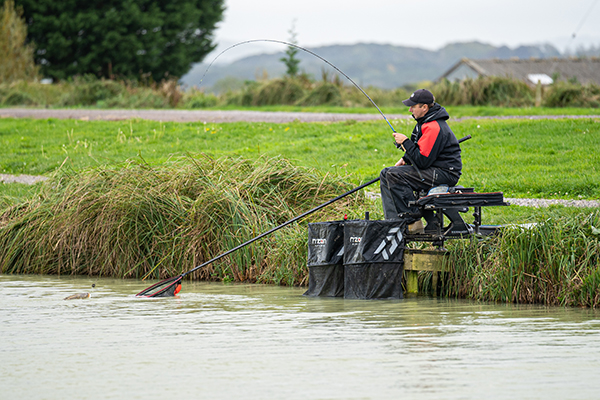
This is much quicker than putting the rod on a rest and encourages you to cast every 30 to 90 seconds which is vital when it’s warm and the fish are queuing up for the bait.
But in the winter of course, it’s a different beast. You wouldn’t want to hold your rod still for up to 15 minutes on a cold windy day that’s for sure! Come this time of year, I revert to the norm of a front and back rest combo, angled a little so I can easily spot any subtle liners from slow moving fish that may encourage you to cast shorter than your current spot for example.
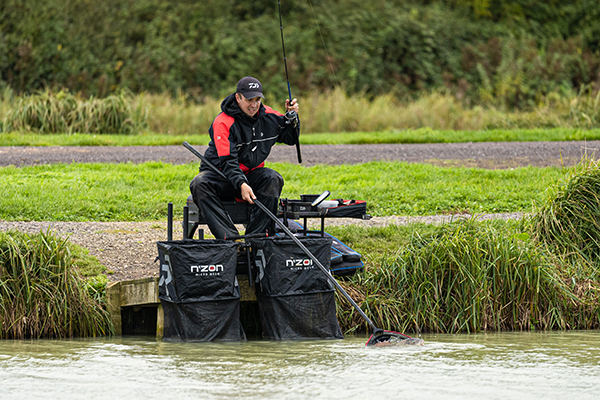
Bite Times
Even though its winter, I still find bites on this tactic usually come within five minutes here at Todber. If it was warmer five minutes would be way too long and more casts will equal more bites. But when the water’s cold and clear like it is now, it doesn’t work like that in my experience.
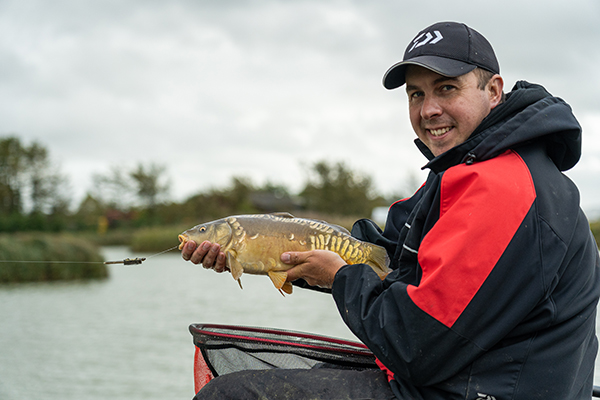
Even though your bites in general often come at under five minutes, if you don’t get a bite, you’re better off leaving it in for up to 15 minutes so you don’t make too much disturbance. It can be frustrating at times, knowing you probably won’t get a bite after five minutes, but in the long run you often end up with more at the end of the match because you’ve mitigated some of the things that can easily spook the fish out of your swim.
I’ve fallen into the trap of casting too often plenty in the past, but it’s counterproductive so try not to fall into that trap.
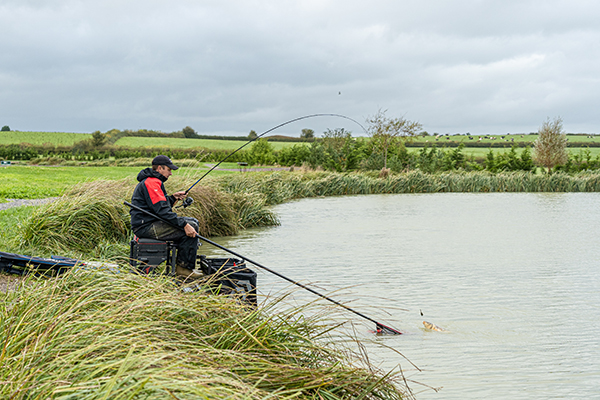
So, there you go, that’s how I go about fishing a Method Feeder in the cooler months on prolific venues. Finding the right spot in your swim, having the correct bait, not casting too often, and using tackle you’re confident in is all you need.
Just because weights are huge in the summer, you still need to adopt a completely different mentality in the winter and do things like cast round the swim to find the fish and try to make as little disturbance in the water as you can.
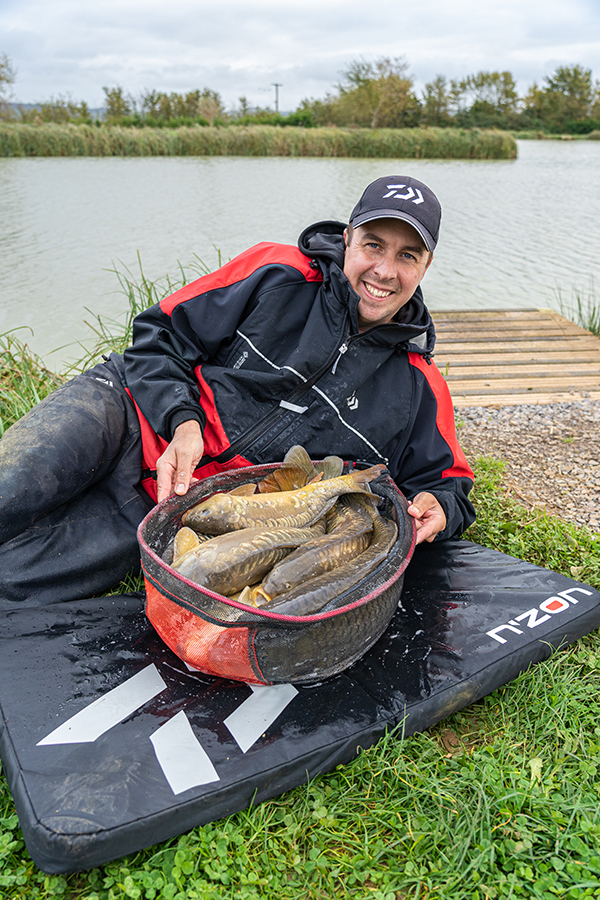
- Log in or register to post comments

